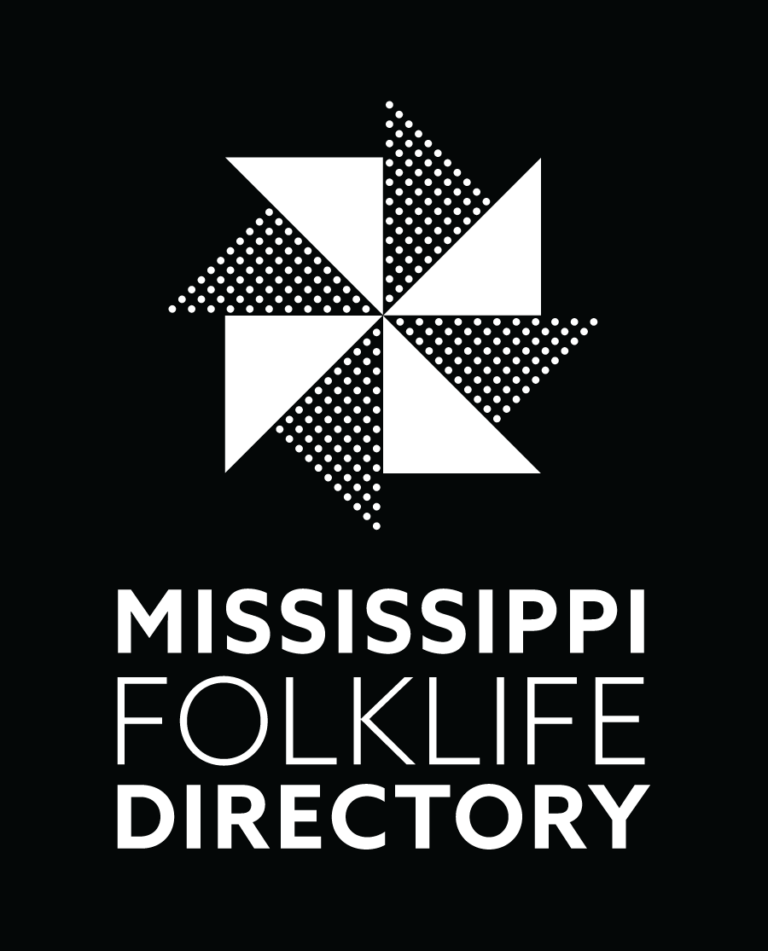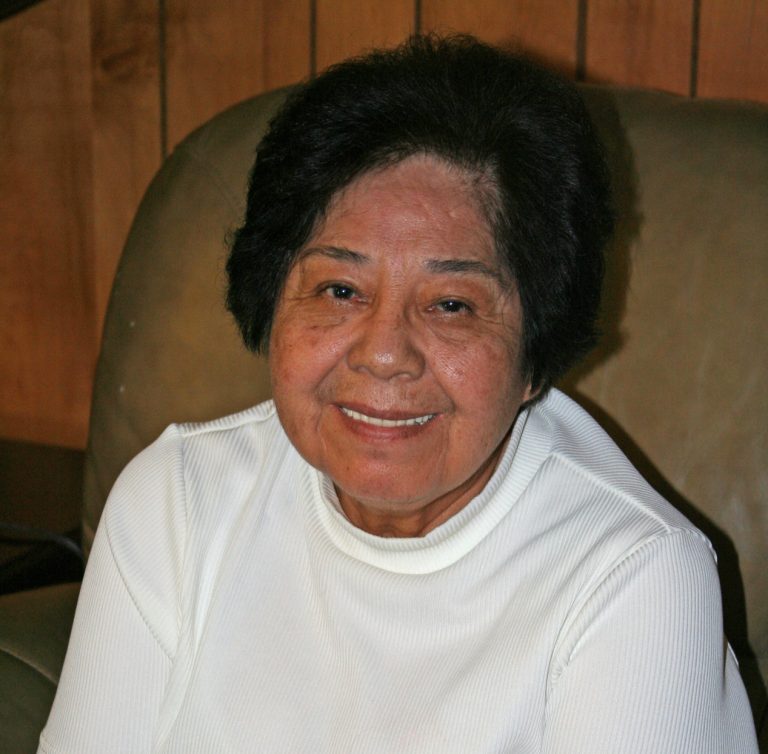Thallis Lewis recently retired after working for the Mississippi Band of Choctaw Indians for 43 years, finishing as Director of the Cultural Affairs Program. In 2003, she received the Governor’s Award for Leadership in Mississippi Heritage.
Mrs. Lewis was born a sharecropper’s daughter in Bogue Chitto (about 20 miles east of her current home in the Pearl River Community in the western part of Philadelphia). The demands of agriculture and the eternal debt cycle of sharecropping left little time to learn traditional ways from her father, though she saw him practice Choctaw social dances each year before July’s Choctaw Fair. When she was twelve, he suffered a heart attack, and she and a brother had to finish bringing in the crops. She and two siblings finished high school, and she got a B. A. in education. During student teaching, and during several years working in the Head Start program, she learned how to bead. When she was student teaching, a blind woman named Ida Frazier visited and taught traditional dance steps, which inspired Thallis. Minnie Hand, an Anglo music teacher at the high school, was helping revive traditional dance in that setting; she and Thallis had many lively discussions about how the dances should be done.
A cousin invited Thallis to join her dance group. Then, after a few years, she was ready to lead her own. Chief Philip Martin asked her to help with the dancing at the Choctaw Fair, where that activity burgeoned from three community-based groups in the late 1970s to about eighteen today. Her daughter Jane leads a local group, two grandsons chant (the music for this repertoire of dances consists of non-lexical songs accompanied by a side drum or sticks), and a cousin leads a group that comes to the Fair from a Choctaw community in Tennessee. While there is some tendency today to standardize the music for and the steps of the dances, Mrs. Lewis encourages retaining the variety more typical in the past.
Choctaw social dances are essentially line dances for even numbers of males and females–ideally at least five of each—wearing traditional clothing. These days, kids learn to dance in the Choctaw schools. They dance at the Spring Festival ceremonies at their schools, then many of them join the community-based dance groups that participate each July in the Choctaw Fair. These groups span the generations, with both the line of males and that of females arranged by height! Many of the dances are named for animals, and often include motions referring to those animals. For instance, the dancers have occasion to duck down during the “Duck Dance,” and imitate the play of raccoons during the “Raccoon Dance.” But two dances that aren’t about animals that have become especially popular of late, the “War Dance,” the relatively athletic steps of which appeal to kids, and the “Stealing Partners Dance,” which has become the universal favorite because, after partners have been “stolen” from within the group, dancers grab participants from the audience too. Dancing supports community unity and family feeling. Thallis points out: “If I knew that my grandkids would be there, we’d be there . . . a kid will turn and look at you and smile.”

